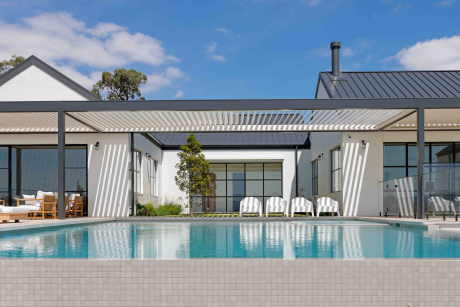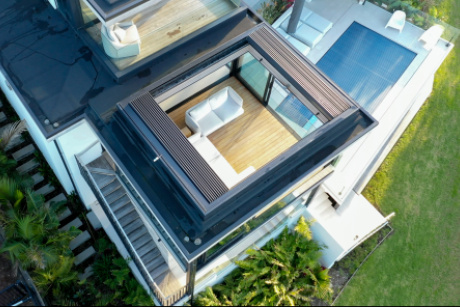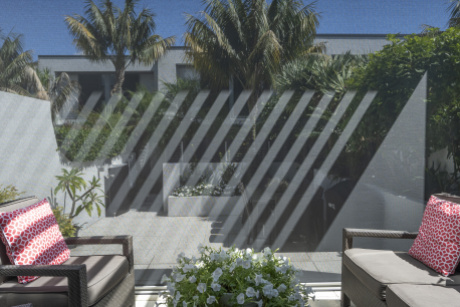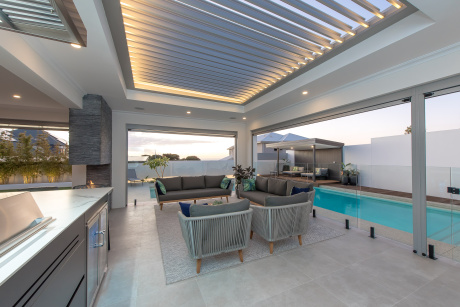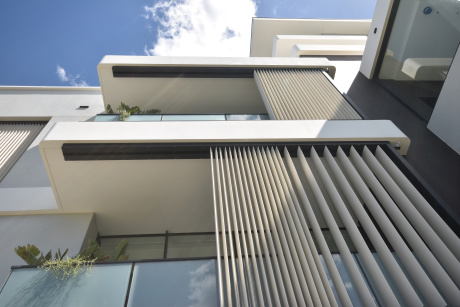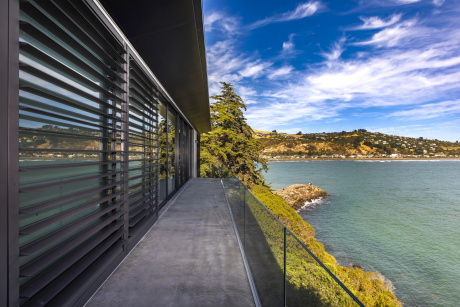The Rise of Louvre Roof Systems in New Zealand and Australia: A Practical Evolution in Outdoor Living
A louvre roof is a type of adjustable roofing system made up of horizontal slats—also called blades—that can be opened or closed to control sunlight, airflow, and weather protection. These slats are typically made from durable materials like aluminium and are either motorised or manually operated.
When closed, they offer shelter from rain and harsh sunlight. When opened, they allow ventilation and filtered natural light to enter the space below. This flexibility makes louvre roofs a functional, stylish solution for creating comfortable outdoor living areas.
In recent years, louvre roof systems have gained strong momentum across New Zealand and Australia, particularly in residential architecture. Their rise in popularity reflects a broader shift in how homeowners use their outdoor spaces—not just for occasional entertaining but as a seamless extension of indoor living.
Louvres have reshaped expectations for patios, decks, and courtyards by providing weather-responsive shade and ventilation year-round.
New Zealand's often unpredictable climate has played a big part in this shift. Homeowners are increasingly choosing adaptable systems that allow them to enjoy their outdoor areas in both summer and winter.
These smart systems are now standard in many new builds and renovations, offering practical value and comfort while blending with a range of architectural styles, Louvretec NZ.
Whether you're renovating an existing space or building a new one, a louvre roof system is no longer just a luxury—it’s a practical upgrade that enhances lifestyle, adds year-round usability, and boosts property appeal.
The Original Concept: Passive Environmental Control
The idea behind louvres is centuries old and grounded in one of the most basic architectural needs: controlling light, heat, and airflow without mechanical systems.
Long before smart homes and motorised blades, traditional louvres were designed as fixed slats set into windows, walls, or roofs to provide passive environmental control. These early systems had a simple but effective purpose: keep buildings cooler, ventilated, and protected from direct sunlight, especially in hot or humid regions.
Early Applications in Architecture
Louvres were especially common in Mediterranean and tropical architecture, where managing indoor temperature without electricity was essential. You would find them in colonial homes, plantation houses, and heritage buildings, often integrated into shutters or gable ends.
The slatted design allowed air to flow through even when closed, which helped with natural ventilation, crucial in times before fans or air conditioners were widely available.
In New Zealand and Australia, early versions of louvres appeared in coastal homes and public buildings, often used in upper sections of walls or above doors. These openings helped release rising heat while preventing harsh sunlight or heavy rain from entering directly.
Environmental Function in Warm Climates
The strength of fixed louvres lies in their passive performance. They:
- Block direct sunlight, reducing glare and interior overheating
- Allow cross-ventilation, which cools indoor spaces naturally
- Provide privacy, without shutting out air or light completely
This type of passive cooling was vital in regions with warm, sunny climates like Queensland or Northland. Over time, architects began integrating louvres into verandas and breezeways to help control indoor temperatures without relying on mechanical air systems.
Traditional Materials
Historically, fixed louvres were made from materials that were locally available and weather-resistant:
- Timber was common for its availability, workability, and aesthetic appeal. It was easy to angle and install, and gave homes a softer, more natural appearance.
- Metal (especially galvanised steel or iron) was used in harsher environments where durability and security were more important. However, these materials were heavier and more prone to rust before aluminium became widely used.
As materials improved and design needs evolved, architects began experimenting with new formats—but the core idea of climate-responsive design stayed the same.
This long-standing history forms the foundation of today’s modern louvre roof systems. The difference is that where early louvres were fixed, modern systems are dynamic and responsive, offering full user control over light, air, and shelter.
Yet the goal remains unchanged: to create living spaces that are naturally more comfortable, functional, and efficient.
Modern Louvre Roof Systems: A Design Evolution

The shift from fixed louvres to adjustable, motorised louvre roof systems marks a major evolution in architectural design. What was once a passive, static feature has now become a smart, climate-responsive solution that can adapt to real-time conditions at the push of a button. This transformation was driven by changing lifestyle needs, material innovation, and advances in automation technology.
The Birth of Adjustable Systems
In the 1990s, louvre roof systems began gaining attention in Australia, particularly in regions like Queensland and New South Wales, where homes regularly faced intense sun and tropical weather.
The idea was simple: allow users to tilt the roof slats open or closed depending on the weather. Unlike fixed roofs, these systems could respond dynamically to sunlight, rain, and airflow needs, giving outdoor spaces greater flexibility.
Soon after, the concept reached New Zealand in the early 2000s, where unpredictable weather and a strong architectural focus on indoor-outdoor flow made it especially relevant.
Early adopters were often high-end residential builds or custom-designed homes, where the louvre system was integrated into courtyards, verandas, and decks. According to Louvretec NZ, these features quickly caught on due to their ability to make outdoor areas functional in both sun and rain.
From Manual to Motorised
While early systems often relied on manual operation (using cranks or levers), the real turning point came with the introduction of motorised louvre systems. Homeowners could now open or close the roof using a remote control, or even automatically through weather sensors.
Modern systems now come with the following:
- Rain sensors that close the roof when it starts to drizzle
- Smart home integration, allowing control via mobile apps or voice assistants
- Pre-programmed settings for light levels, airflow, or privacy
This upgrade significantly increased usability and convenience, allowing the systems to operate seamlessly with little input.
Design Becomes a Priority
As popularity grew, manufacturers shifted focus from functionality alone to aesthetic integration. Louvre roofs became more than just a practical solution—they evolved into a design element that could enhance the architectural style of a home.
Options for colour-matched powder-coated finishes, hidden motors, and blade profiles meant systems could suit modern, minimalist, or even heritage-inspired homes.
The systems also diversified in layout:
- Wall-attached configurations for patios or backyards
- Freestanding designs for poolside lounges or garden pavilions
- Built-in structures seamlessly embedded into rooflines
By the mid-2010s, louvre roofs were no longer exclusive to luxury properties. As technology matured and costs came down, they became a mainstream feature in residential projects across both countries.
Technological Improvements and Local Adaptation
Louvre roof systems have evolved rapidly over the last two decades, thanks to advances in materials, smart technology, and customisation options. What once required manual adjustment can now operate entirely on its own, adapting to changing weather or user preferences.
In both New Zealand and Australia, these innovations have helped louvre systems become not just smarter, but more reliable and suited to the region’s unique climate challenges.
Material Innovation for Durability
In the early days, louvre systems used heavier materials like steel or even timber. Today, powder-coated aluminium has become the material of choice across New Zealand and Australia for several reasons:
- It’s lightweight yet strong, making it easier to install and support
- Rust-resistant, especially important for coastal regions
- Low maintenance, requiring only occasional cleaning
- Available in a wide range of colours and finishes to suit various home styles
Aluminium is not only practical but also eco-friendly, being fully recyclable and more energy-efficient to produce than many other metals.
Adapting to Local Weather Conditions

New Zealand’s climate presents unique challenges—sun one minute, rain the next. Australian regions, especially in the north, also deal with extremes in UV exposure and heavy rainfall. Louvre systems have adapted to these conditions with:
- Interlocking blades and integrated guttering systems
- Wind-resistant engineering that prevents uplift in storms
- UV-stable finishes that prevent fading under harsh sun exposure
Ensuring proper sealing and drainage is crucial for systems to remain watertight and functional. This makes professional installation and system design a critical part of their long-term performance.
Customisation and Local Manufacturing
Manufacturers in NZ and Australia have responded to demand with a wide range of custom-built solutions. From bespoke blade shapes to site-specific sizing and layout, systems are now highly adaptable:
Louvretec NZ, for example, offers multiple blade profiles for aesthetic and performance needs.
As a result, louvre roofs are no longer a one-size-fits-all product—they are tailored architectural features, designed and built locally to suit each project.
Louvre Roofs Today: Mainstream and Customisable
Louvre roof systems have moved from luxury to mainstream living solutions across New Zealand. Their ability to deliver all-weather flexibility, comfort, and climate control has made them a standard upgrade in many residential outdoor projects.
Leading this shift is Louvretec NZ, a New Zealand-based manufacturer and installer known for their innovative blade designs and tailored systems that match the unique environmental and architectural demands of local homes.
A Common Feature in Contemporary NZ Homes
Louvretec NZ has positioned louvre roofs as essential features in a range of applications:
- Patios and alfresco areas that need shelter without enclosing space
- Decks and verandas that benefit from adjustable sunlight and ventilation
- Poolside retreats and garden spaces that demand comfort and privacy
- Architectural builds where indoor-outdoor flow is a key design element
These systems help homeowners create usable spaces year-round, especially in regions where the weather can shift between sun and rain within hours. As described in Louvretec’s own project articles and blogs, their products are designed with the flexibility to turn previously underused outdoor zones into fully integrated living areas.
Customisable Design Options from Louvretec NZ
One of Louvretec NZ’s main strengths lies in its design flexibility. Every system is custom-made to fit the client’s environment and aesthetic preferences. Design options include:
- Multiple blade profiles, such as the Hi-Performance Super Roof or Spiral Pivot series, cater to different shading, span, and drainage needs
- Freestanding or attached structures, depending on the site and purpose
- Extensive powder coating colour selections, allowing systems to match cladding, joinery, or feature trims
- Built-in guttering and sealing systems for watertight performance and clean visual lines
Each installation is engineered with local conditions in mind. Louvretec NZ takes into account sun angles, wind exposure, and drainage patterns to ensure the final solution is not just functional but enduring and seamless.
Trusted Local Expertise
With decades of experience and a strong presence in both residential and commercial sectors, Louvretec NZ offers both product and project support, from initial design consultation through to installation. This local expertise is a key reason why their systems have been integrated into homes throughout Auckland, Christchurch, Wellington, and regional areas.
By focusing on customised outdoor living solutions, Louvretec NZ continues to shape how homeowners interact with their exterior spaces, making louvre roof systems a functional and design-forward investment in today’s homes.
Why Louvre Roofs Work So Well in NZ and Australia
Louvre roof systems are particularly well-suited to the environmental and lifestyle demands of New Zealand and Australia.
Both countries experience varied and sometimes unpredictable weather, making outdoor living a challenge without adaptable solutions. Louvre roofs meet this need by providing climate-responsive shelter, allowing homeowners to enjoy their exterior spaces in comfort, no matter the season.
Designed for Unpredictable Weather
In New Zealand, it’s not uncommon to experience sunshine, wind, and rain within the same afternoon. This variability makes fixed shelters or exposed patios less practical. Louvre roofs offer a solution by responding instantly to changing conditions:
- Open the blades for ventilation on warm, still days
- Tilt for partial shade when the sun is strong
- Fully close the system to create a watertight, sheltered area during rainfall
Louvretec NZ’s systems are engineered with local conditions in mind. For example, their high-performance blade profiles—like the 180 Linear or Super Roof—are tested to handle wind zones, support heavy rainfall with internal guttering, and maintain ventilation without compromising coverage, Louvretec NZ.
Support for Indoor-Outdoor Flow
In both NZ and Australia, indoor-outdoor flow is a major focus in residential architecture. Homeowners want their outdoor areas to feel like extensions of the home, whether they’re dining, relaxing, or entertaining.
Louvre roofs help achieve this by:
- Creating a visual and functional link between the indoors and outdoors
- Allowing for year-round usability of patios, courtyards, and decks
- Providing shade in summer while still letting in natural light during winter
With Louvretec’s customisable options, the system can be designed to align with the home’s roofline, joinery colours, and overall style, making the outdoor space feel fully integrated, not just an add-on.
Energy Efficiency and Passive Cooling
Another benefit relevant to both countries is sustainability. Louvre roofs support passive design by:
- Reducing heat gain in adjacent indoor areas
- Minimising reliance on air conditioning by allowing natural airflow
- Using powder-coated aluminium, a low-maintenance and recyclable material
As highlighted in Louvretec’s energy-efficiency discussions, strategic control over light and shade can contribute to lower energy bills and more comfortable homes, without sacrificing open-air living.
Built for Regional Durability

In coastal areas like Tauranga or the Gold Coast, salt exposure and humidity can shorten the life of outdoor fixtures. Louvretec NZ systems are designed with marine-grade aluminium and durable powder coatings to resist corrosion and fading.
The weather-sealed blades and structural reinforcements make them suitable even in high-wind zones, which is crucial in parts of Wellington or exposed hilltop properties.
More Than Shelter: Why a Louvre Roof Is a Smart Outdoor Investment
As outdoor spaces become more central to how we live and entertain at home, louvre roof systems offer a future-proof solution that delivers both comfort and control. What started as a functional shading concept has evolved into a fully integrated architectural feature tailored to New Zealand’s lifestyle, climate, and design values.
Whether you're in a coastal home in the Bay of Plenty, a suburban property in Hamilton, or an inner-city townhouse in Auckland, a louvre roof can transform your outdoor space from a weather-dependent zone into a true extension of your home.
With Louvretec NZ leading the way in innovation and local expertise, homeowners can expect more than just protection from the elements. They gain a flexible, stylish, and energy-efficient solution that enhances liveability and adds value to their property.
For those looking to create a usable, elegant space outside, one that adapts with the seasons, a louvre roof is not just a feature. It’s a smart outdoor investment.


